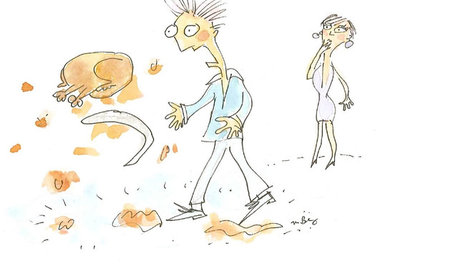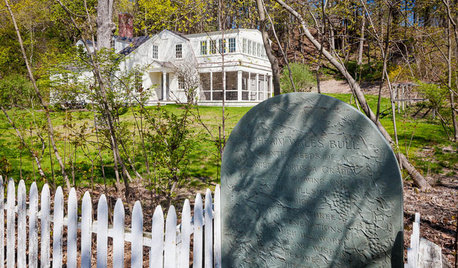Apparent partial success with SVB this year
glib
10 years ago
Related Stories

ARCHITECTUREDesign Workshop: How to Separate Space in an Open Floor Plan
Rooms within a room, partial walls, fabric dividers and open shelves create privacy and intimacy while keeping the connection
Full Story
COLORS OF THE YEARPantone Has Spoken: Rosy and Serene Are In for 2016
For the first time, the company chooses two hues as co-colors of the year
Full Story
MOST POPULAR15 Remodeling ‘Uh-Oh’ Moments to Learn From
The road to successful design is paved with disaster stories. What’s yours?
Full Story
ARCHITECTUREDesign Workshop: 9 Ways to Open a House to the Outdoors
Explore some of the best ideas in indoor-outdoor living — and how to make the transitions work for both home and landscape
Full Story
ARCHITECTURE6 Amazing Homes Dug Into the Earth
Designed to disappear or with portions peeking out, these houses bring a new meaning to 'communing with nature'
Full Story
MOST POPULARThanksgiving Tales: When the Turkey Tanks
Houzz readers prove adept at snatching victory from the jaws of entertaining defeat
Full Story
TRADITIONAL HOMESHouzz Tour: Historic Concord Grapevine Cottage’s Charms Restored
This famous property had fallen on hard times, but passionate homeowners lovingly brought it back
Full Story
ECLECTIC HOMESMy Houzz: Dreamy, Organic Style in a Tampa Cottage
Plentiful white paint and timeworn treasures create a light and natural feel in a 1940 Florida home
Full Story
HOUZZ TOURSMy Houzz: High End Meets Budget Friendly in Toronto
Splurging selectively and saving elsewhere, a Canadian family gets a posh-looking home that matches their vision
Full Story
ECLECTIC HOMESHouzz Tour: Personal and Plaid
When it comes to interior design, Scot Meacham Wood wears his heart on his tartan sash
Full StoryMore Discussions







lilydude
glibOriginal Author
Related Professionals
Kenmore Landscape Architects & Landscape Designers · Rossville Landscape Architects & Landscape Designers · Mount Wilson Landscape Architects & Landscape Designers · Galt Landscape Contractors · Hicksville Landscape Contractors · Hollywood Landscape Contractors · Inglewood Landscape Contractors · Painesville Landscape Contractors · Paterson Landscape Contractors · River Ridge Landscape Contractors · South Lyon Landscape Contractors · Centreville Driveway Installation & Maintenance · Eustis Driveway Installation & Maintenance · Libertyville Driveway Installation & Maintenance · San Jose Driveway Installation & Maintenance2ajsmama
zzackey
daninthedirt (USDA 9a, HZ9, CentTX, Sunset z30, Cfa)
glibOriginal Author
daninthedirt (USDA 9a, HZ9, CentTX, Sunset z30, Cfa)
glibOriginal Author
daninthedirt (USDA 9a, HZ9, CentTX, Sunset z30, Cfa)
zzackey
daninthedirt (USDA 9a, HZ9, CentTX, Sunset z30, Cfa)
glibOriginal Author
daninthedirt (USDA 9a, HZ9, CentTX, Sunset z30, Cfa)
zzackey
daninthedirt (USDA 9a, HZ9, CentTX, Sunset z30, Cfa)
zzackey
Creek-side
zzackey
springtogarden
glibOriginal Author
zzackey
zzackey
grandad_2003
Creek-side